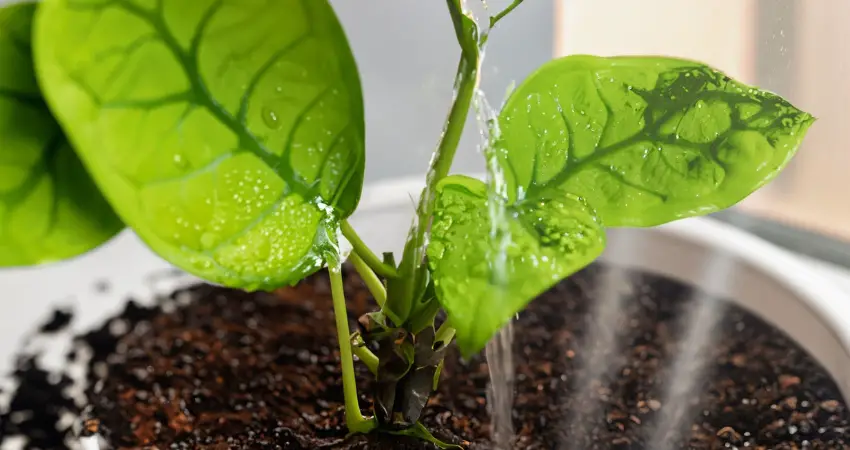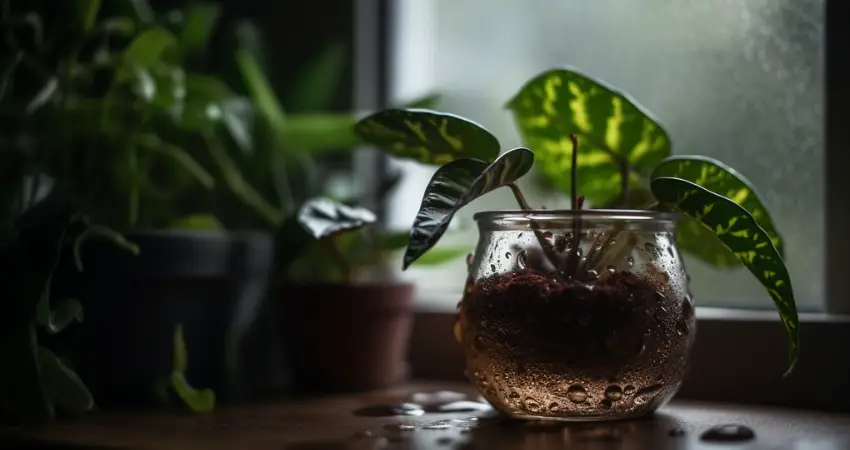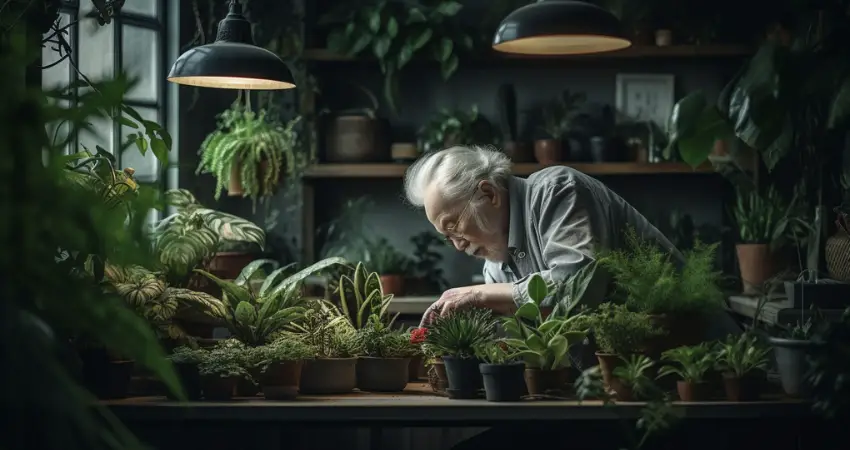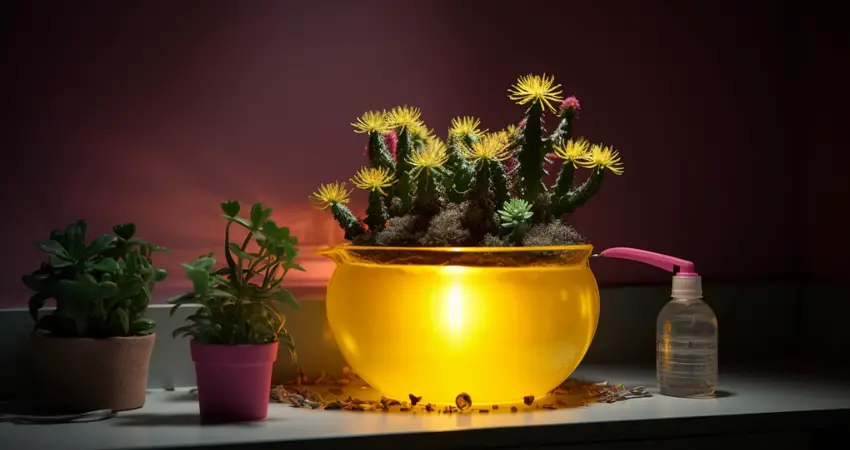Welcome to the world of houseplant care, where the gentle balance between thirst and drowning can determine the life or death of your beloved green companions! Are you a seasoned plant parent or a budding enthusiast eager to learn the secrets of watering success? In either case, you’re in for a treat!
In this comprehensive guide, we’ll delve into the fascinating realm of top watering and bottom watering, two distinct approaches to plant hydration that have sparked countless debates among horticulture aficionados.
Get ready to embark on a journey through the advantages and disadvantages of these methods, uncovering the factors that will help you tailor your watering technique to your plant’s specific needs. Along the way, we’ll share valuable insights on detecting overwatering and underwatering, as well as tips and tricks to master the art of plant hydration.
Watering Methods And It’s Importance
Watering is an essential part of plant care, and the right method can make a significant difference in the health and growth of your houseplants.
Top watering and bottom watering are two common techniques, each with their benefits and drawbacks.
Factors such as plant species, soil type, and environmental conditions will influence the most appropriate method for your plants.
Top Watering: The Classic Approach for Quenching Thirst

Top watering is the traditional method of watering houseplants, in which water is poured directly onto the soil surface. This technique can be done using a watering can, hose, or other tools designed for the purpose.
Advantages
Top watering has several advantages:
- Easy and quick: This method is straightforward and requires little time or effort.
- Ensures water reaches roots: Top watering allows water to penetrate deep into the soil, ensuring it reaches the root system.
- Encourages deep root growth: By reaching deep into the soil, top watering promotes the development of strong, extensive root systems.
- Allows for fertilizer application: Fertilizer can be easily applied during top watering, ensuring even distribution throughout the soil.
Disadvantages
Despite its advantages, top watering also has some drawbacks:
- Waterlogging and root rot risk: Excessive top watering can lead to waterlogged soil and potential root rot.
- Uneven distribution of water: This method can cause water to be unevenly distributed, leaving some areas too dry or too wet.
- Increased evaporation: Water applied to the soil surface may evaporate more quickly, leading to less efficient use of water.
Best practices
To make the most of top watering, follow these best practices:
- Watering frequency and amount: Adjust your watering schedule based on the specific needs of your houseplants, considering factors like humidity, temperature, and light conditions.
- Monitoring soil moisture: Use the finger test or a moisture meter to ensure the soil is adequately moist but not overly saturated.
- Using a saucer to catch excess water: Place a saucer under the pot to collect any excess water that drains through the bottom, preventing damage to surfaces or overwatering.
- Avoiding water on leaves: Be careful not to splash water on the leaves, as this can cause damage or encourage the growth of mold and mildew.
Suitable houseplants
Top watering is particularly well-suited for houseplants that require regular watering and have fast-draining soil mixtures. Examples of such plants include pothos, spider plants, and snake plants.
Bottom Watering: A Soak-It-Up Strategy for Plant Hydration

Bottom watering is a technique in which plants absorb water from below, typically through a tray, saucer, or water reservoir. This method allows the plant to take up water at its own pace, ensuring a more even distribution of moisture throughout the soil.
Advantages
Bottom watering offers several benefits:
- Encourages even water distribution: By allowing the plant to absorb water from the bottom, this method ensures a more even distribution of moisture in the soil.
- Reduces risk of root rot: Because water is absorbed gradually, bottom watering reduces the likelihood of waterlogged soil and root rot.
- Minimizes water waste and evaporation: Since water is absorbed from the bottom, less is lost to evaporation, making this method more water-efficient.
- 4. Discourages pest infestations: Bottom watering helps prevent the growth of mold, mildew, and other pests that thrive in damp environments on the soil surface.
Disadvantages
Bottom watering does have some drawbacks:
- Time-consuming: This method can be more labor-intensive, as it requires the plants to sit in water for an extended period.
- Limited to smaller pots: Bottom watering can be challenging for larger or heavier plants, as it may be difficult to lift and place them in a tray or saucer.
- Difficult for larger or heavy plants: Lifting heavy plants to place them in a tray or saucer may be challenging, and some plants may be too large for this method to be practical.
Best practices
To make the most of bottom watering, follow these best practices:
- Watering frequency and amount: Adjust your watering schedule based on the specific needs of your houseplants, taking into account factors like humidity, temperature, and light conditions.
- Ensuring proper drainage: Ensure that your pots have drainage holes and are placed on a tray, saucer, or reservoir to allow for the efficient absorption of water.
- Avoiding standing water: Remove any excess water from the tray or saucer after the plant has finished absorbing moisture to prevent waterlogging or attracting pests.
- Monitoring soil moisture: Use the finger test or a moisture meter to ensure the soil is adequately moist but not overly saturated.
Suitable houseplants
Bottom watering is particularly well-suited for houseplants that prefer a more drought-tolerant environment and have slow-draining soil mixtures. Examples of such plants include succulents, African violets, and orchids.
Factors to Consider: Making the Right Watering Method Choice

Several factors will influence the choice of watering method for your houseplants:
- Plant species and watering requirements: Consider the specific needs of your plant species, as some may prefer more frequent or deep watering, while others may require a more conservative approach.
- Soil type and drainage: The type of soil in which your plants are growing will impact their watering needs, with fast-draining soils often requiring more frequent watering and slow-draining soils needing less.
- Pot size and material: Larger pots may be more challenging to bottom water, while smaller pots may dry out more quickly, necessitating more frequent top watering.
- Environmental factors: Humidity, temperature, and light conditions can all impact a plant’s watering needs, so adjust your approach based on the specific conditions in your home.
Detecting Overwatering and Underwatering: Reading the Signs
It is essential to recognize the signs of overwatering and underwatering in your houseplants:
Overwatering symptoms
- Yellowing leaves: Overwatered plants may develop yellow, drooping leaves.
- Wilting: Despite having moist soil, overwatered plants may still appear wilted.
- Root rot: Prolonged exposure to excess moisture can lead to root rot, a serious condition that can ultimately kill the plant.
- Mold and fungal growth: Overwatering can create an environment that encourages mold and fungal growth on the soil surface or the plant itself.
Underwatering symptoms
- Dry and brittle leaves: Underwatered plants may have dry, brown, or crispy leaves that break easily.
- Leaf drop: Plants that are not receiving enough water may shed their leaves as a survival mechanism.
- Stunted growth: Insufficient water can hinder a plant’s growth and development, resulting in a smaller or less vigorous plant.
- Root damage: Prolonged periods of underwatering can cause root damage, making it difficult for the plant to absorb water and nutrients.
Mastering Watering Techniques: Tips for Plant Hydration Success

Follow these tips to ensure your plants receive the appropriate amount of water:
- Monitoring soil moisture: Regularly check the soil moisture using the finger test or a moisture meter to ensure you are providing the right amount of water for your plants.
- Adapting to seasonal changes: Adjust your watering schedule to account for seasonal changes, as plants may require more water during periods of active growth and less during dormancy.
- Adjusting watering based on plant growth stages: Younger plants or those experiencing rapid growth may require more frequent watering, while mature or slow-growing plants may need less.
Frequently Asked Questions (FAQs)
Which method is better: top watering or bottom watering?
It depends on the specific needs of your houseplants. Some plants may thrive with top watering, while others may prefer bottom watering. It’s essential to understand the requirements of your individual plants and adjust your watering methods accordingly.
How do I know which watering method is best for my houseplants?
Research the specific water requirements of your houseplants, as this will help you determine which method is most suitable. Factors to consider include the plant’s native habitat, soil type, and sensitivity to overwatering. Experiment with both methods and observe how your plants respond.
Can I use a combination of top and bottom watering for my houseplants?
Yes, combining top and bottom watering can be beneficial for some houseplants, particularly those with unique water requirements. Alternating between the two methods can help maintain optimal soil moisture and promote healthy root growth. Remember to monitor your plants’ response to these methods and make adjustments as needed.
Bottom Line
Top watering and bottom watering both have their benefits and drawbacks, and the choice between these methods will largely depend on the specific needs of your houseplants. Understanding the advantages, disadvantages, and best practices for each method will enable you to make an informed decision and promote healthy plant growth. Remember to monitor soil moisture, adjust your watering schedule according to your plant’s needs, and pay attention to signs of overwatering and underwatering. By following these guidelines, you can ensure your houseplants thrive and enjoy a long, healthy life.
